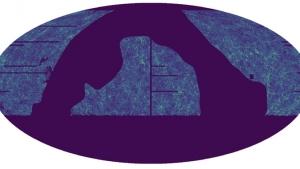UH astronomers produce catalog to extensively map universe
University of Hawaiʻi at MānoaLink to video (details below): https://bit.ly/3oWmwM3
What does our universe look like at the largest size scales? A team of researchers from the University of Hawaiʻi Institute for Astronomy (IfA) and Eötvös Loránd University in Hungary has produced a massive new catalog of high-fidelity distance estimates to more than 350 million galaxies, revealing the soap-bubble structure of the universe in detail.
The team used data from UH’s Panoramic Survey Telescope and Rapid Response System or Pan-STARRS1 (PS1) on Haleakalā and the space-based Wide-field Infrared Survey Explorer (WISE) mission to first classify objects as stars, quasars, and galaxies, and then estimate the distances to galaxies. IfA’s Pan-STARRS1 Sky Survey data is currently the largest public imaging survey in visible light. In combination with WISE, this provides brightnesses for each object in nine different color filters and many other parameters.
Related UH News story: Largest digital sky survey released by Pan-STARRS, December 19, 2016
IfA Astronomer István Szapudi said, “Combining the optical PS1 with the spaced-based infrared colors of WISE yields a large and homogeneous map of the universe extending out 10 billion light-years. We are seeing the structure of the universe back to when it was less than half of its present age.”
The catalog, WISE-PS1-STRM, is now available to the public on Mikulski Archive for Space Telescopes. Research was recently published in the Monthly Notices of the Royal Astronomical Society.
In addition to the two massive datasets, the team applied special computational methods they developed to analyze object colors and shapes and extract their types and distances.
“These deep-learning tools have been refined and improved so they now produce classifications and distances that are accurate to one percent,” said Robert Beck, a former cosmology postdoctoral fellow at IfA.
According to researchers, the catalog will be useful in a vast number of scientific projects, and paves the way for similar work from future space-based projects such as Euclid, a near-infrared space telescope under development in Europe focused on researching dark energy and dark matter by accurately measuring the acceleration of the universe.
VIDEO BROLL: (:45)
:00-:36 Animation of large scale structure of the universe (Credit: Greg Bacon/STScI/NASA Goddard Space Flight Center)
:37-:45 Pan-STARRS 1 telescope on Haleakalā

